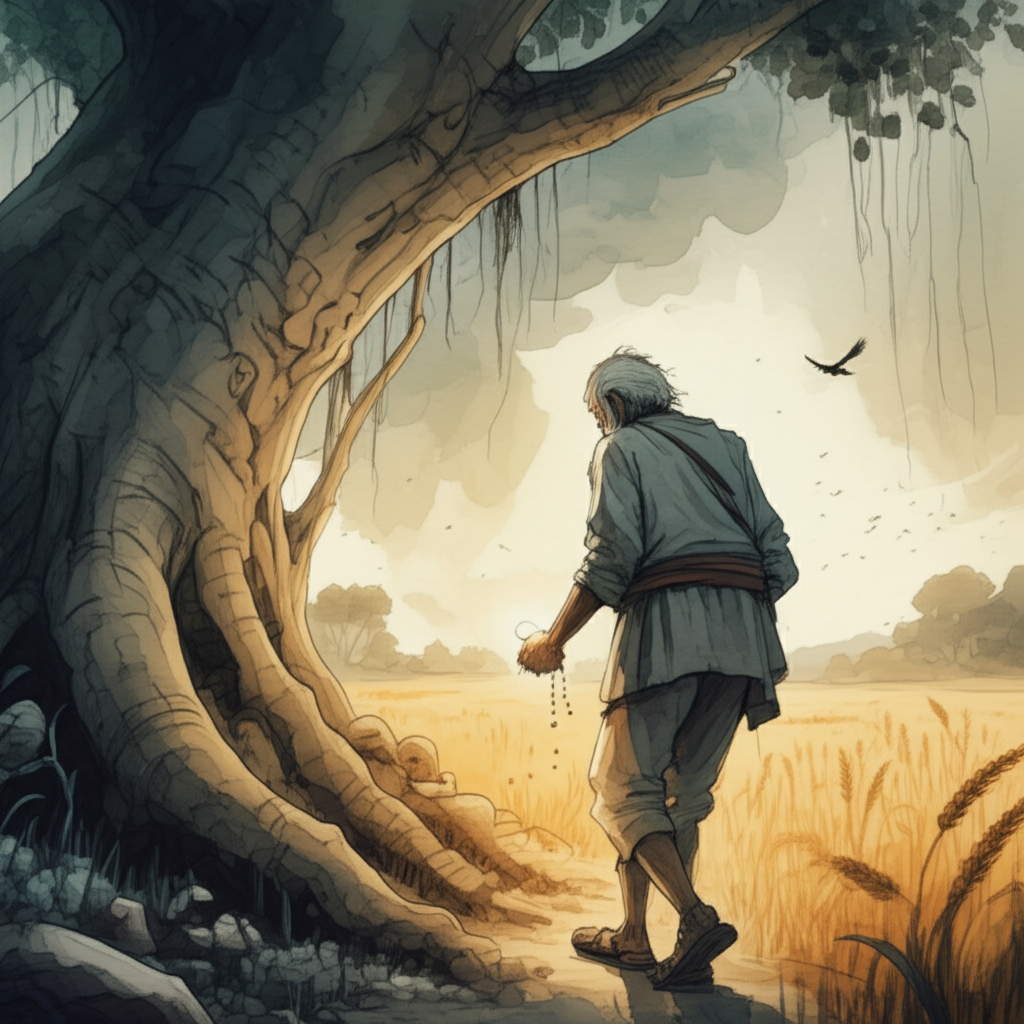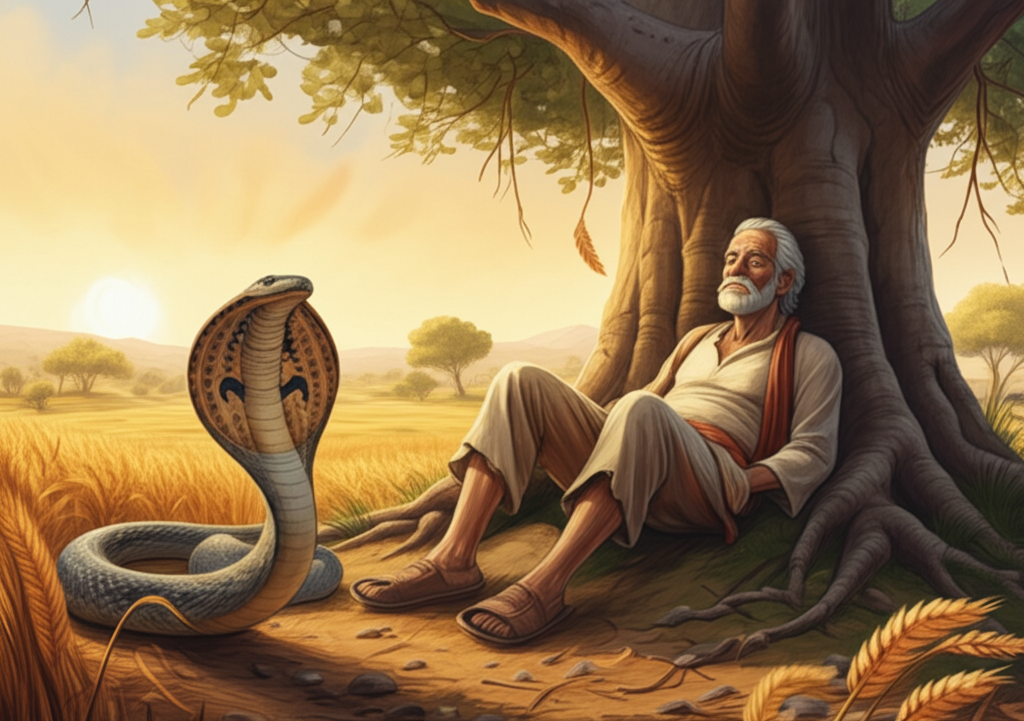
Once upon a time, there was a farmer named Haridatta. He worked really hard, but he didn’t earn much money. One hot day, Haridatta was super tired and decided to take a nap under a tree. While he was resting, he saw a big snake with a hood slithering out of a little hill made of dirt. Haridatta thought, “Wow! Maybe this snake is the special helper of my farm! I haven’t been nice to it, and that’s why I’m not making any money. I need to say hello!”
So, he got some milk, put it in a bowl, and went to the little hill. He shouted, “Hello, Helper of this Field! I didn’t know you lived here. I’m sorry I haven’t been nice to you. Please forgive me!” Then he left the milk and went home.
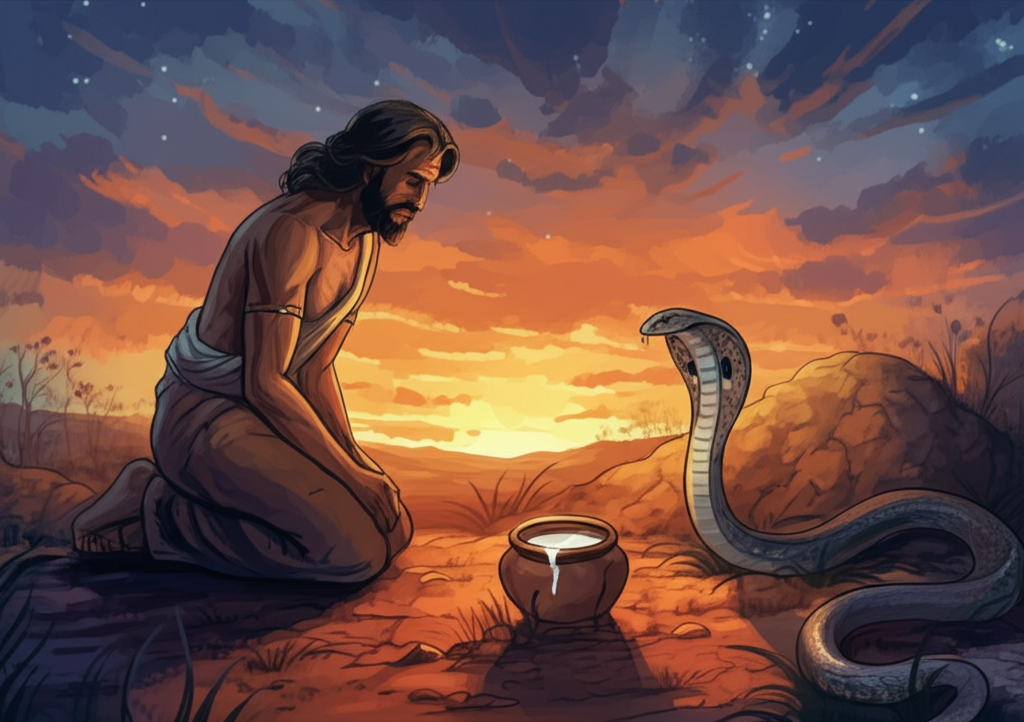
The next morning, he checked the bowl and found a shiny gold coin! From that day on, every day he gave the snake milk and found a gold coin.
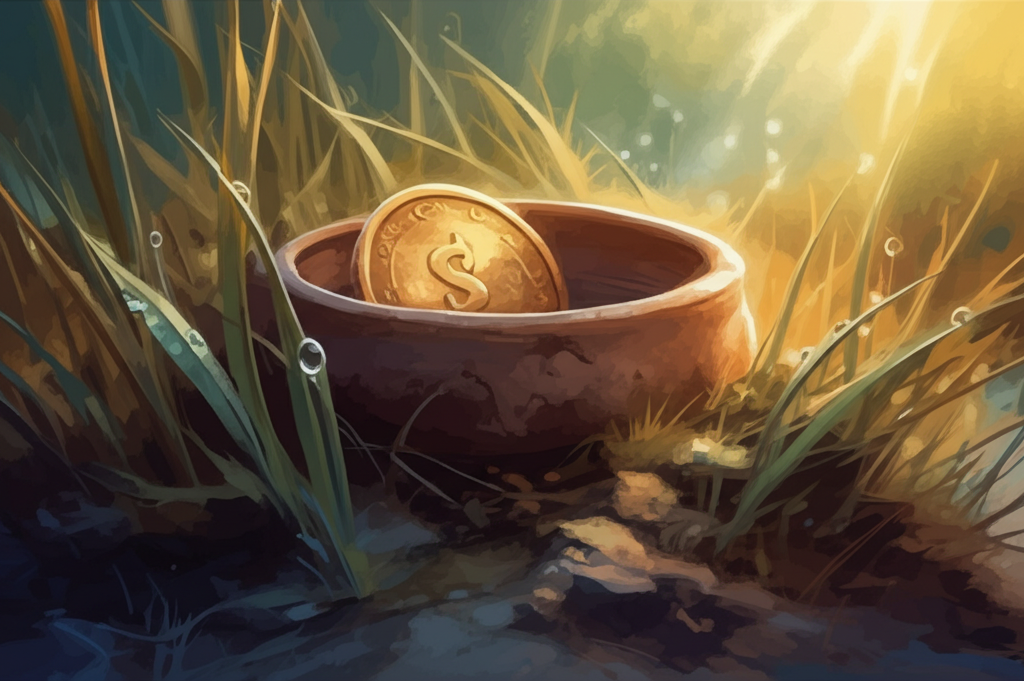
One day, Haridatta had to go to town, so he told his son to take the milk to the snake’s hill. The son did what his dad said and went back home. The next day, he found a gold coin. He thought, “This hill must be full of gold coins! I’m going to catch the snake and take all the gold for myself!” So, the next day, when he was giving the milk to the snake, the farmer’s son whacked it on the head with a stick! But the snake didn’t die. It got super mad and bit the boy with its sharp teeth. The boy fell down and didn’t wake up. Everyone was very sad and had a special fire to remember him.
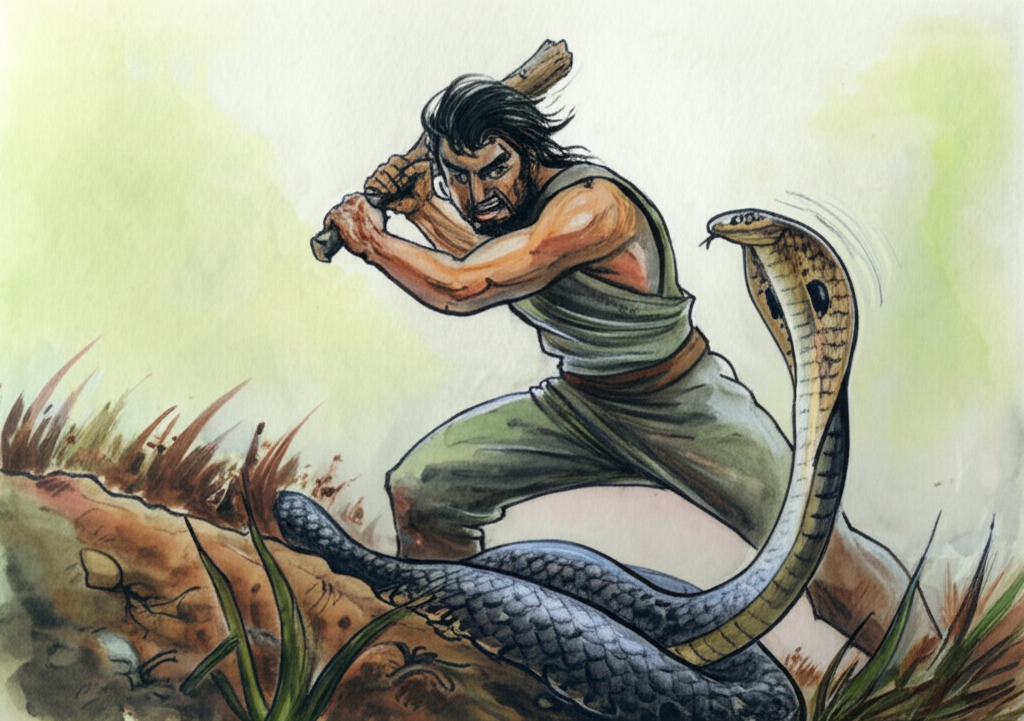
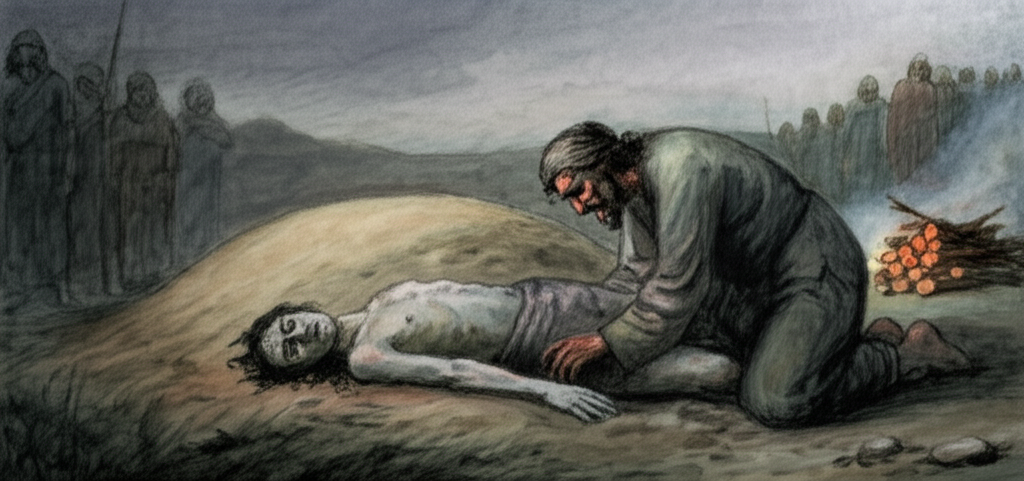
Two days later, Haridatta came home. When he found out what happened to his son, he was very, very sad. But after a little while, he took the milk, went to the snake’s hill, and called out to the snake in a loud voice.
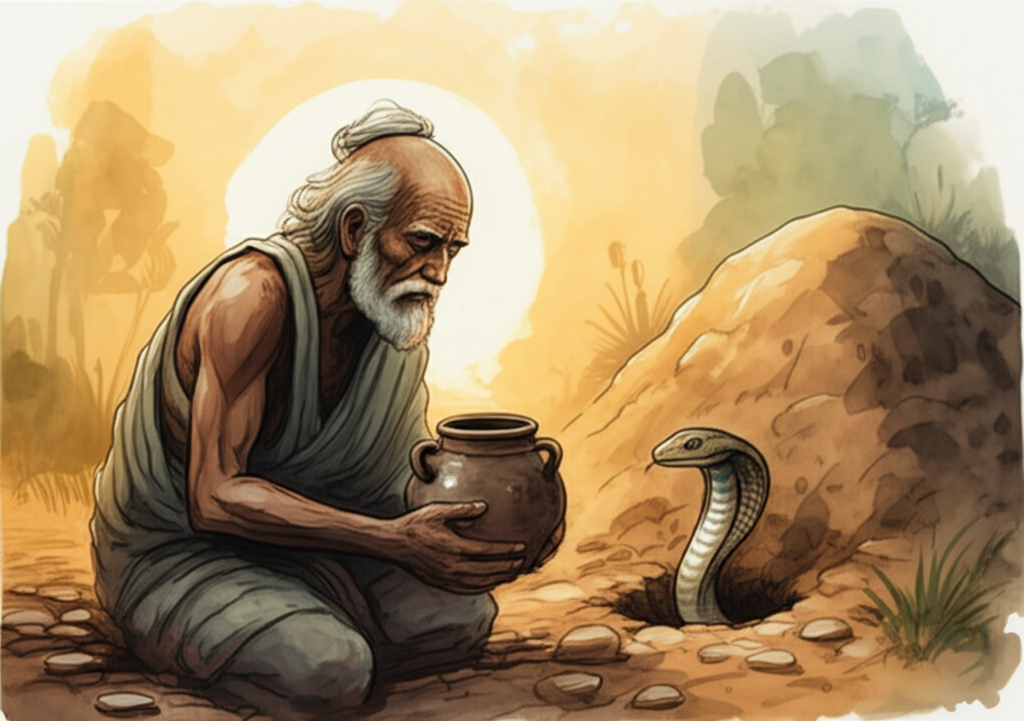
After a long time, the snake peeked its head out of the hill and said, “You’re only here because you’re greedy, and you even forgot about your son! We can’t be friends anymore. Your son hit me when he was young and didn’t know better, and I bit him. How can I forget the stick? And how can you forget losing your son?” Then, the snake gave Haridatta a beautiful pearl and disappeared. But before it left, it said, “Don’t come back!”
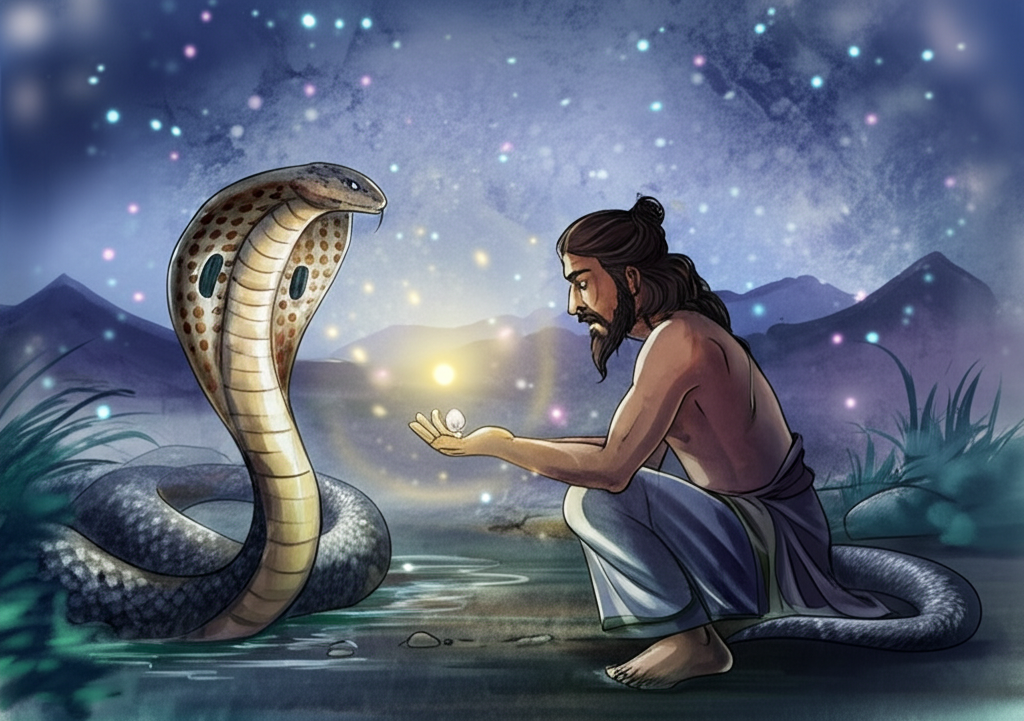
Haridatta took the pearl and went home, feeling sorry for his son’s silly mistake.
